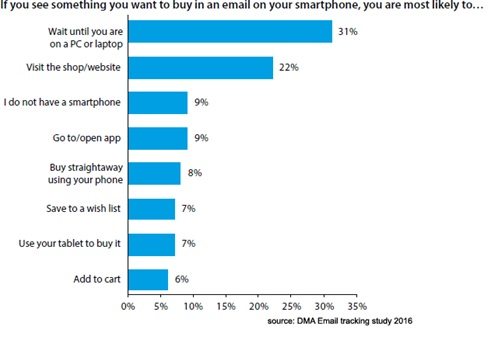Email is the workhorse of direct marketing. The basics have remained consistent for years. Best practices from 10 years ago are still relevant.
But email marketing is evolving. Segmentation, personalization, mobile: All impact returns on investment. In this post, I’ll review the evolution of email marketing since its inception. I’ll offer a framework to evaluate how your program stacks up against the most sophisticated senders.
Evolution of Email

Email marketing has evolved from a “batch and blast” strategy to applying methods to increase returns on investment.
Email marketing is increasingly complex. Initially, marketers mainly used a “batch and blast” strategy, sending the same email to an entire file. Marketers could sit back and watch sales roll in. It wasn’t long, however, before they looked at ways to increase their already solid returns on investment.
Segmentation was one of the ways — separating a file into like-minded groups (by behavior or demographics) and sending relevant emails to each group. Segmentation remains very effective.
But segmentation has evolved. It now includes dynamic content and personalization. Marketers can create unique emails for each subscriber based on available data — purchase history, geolocation — and automatically insert it into the body or subject line.
Using data to fuel relevancy evolved into predictive email marketing, wherein a company applies data to predict what shoppers may or may not purchase. A good example is product recommendations.

This email by Everyday Art displays customized product recommendations.
The latest evolution is agile and variable emails, wherein the content of an email can change when it’s opened, or even after it is delivered.
The rise of smartphones has dramatically impacted email. Depending on the study, roughly 60 to 80 percent of email opens occur on mobile. For marketers, it is important is to understand how this affects behavior.
Data & Marketing Association, in a 2016 survey, found that 31 percent of buyers who initially open an email on mobile will wait until they are at their computer to purchase. Only 8 percent will buy from a phone. This is important for attributing sales to email.

Data & Marketing Association, in a 2016 survey, found 31 percent of buyers who initially open an email on mobile will wait until they are at their computer to purchase.
Evaluating Your Program
Zeta Global, a lifecycle marketing company, developed a tool to help marketers evaluate their email marketing program. The tool helps identify areas of opportunity. It uses six categories to access email marketing sophistication.
- Email list and data. Basic senders use only email addresses with no other subscriber information. Retaining demographics such as name, address, age, and gender indicate a more advanced data level. The most progressive senders segment their recipients by engagement or demographics. Others track user engagement through both email and offline.
- Personalization. Marketers who do not personalize emails are relatively less progressive. Those who tailor emails to groups or add personalization to reflect a user’s interests display more complex strategies. The most advanced senders create unique email content by individual with every deployment.
- Email frequency. Email senders with irregular, unplanned deployments are missing opportunities, according to Zeta Global. Developing a calendar with scheduled campaigns indicates a high-level program.
- Email optimization. Testing and refinement are required to continually optimize any marketing campaign. Programs that practice ongoing testing and refinement are considered top-level. Low-level email efforts would have little to no testing or optimization included.
- Reporting. All email service providers presumably track opens and clicks. But what a brand does with this reporting reflects the maturity of its program. Mature programs will track campaign metrics and compare to benchmarks and goals. Less advanced programs will either not track metrics at all or track them sporadically.
- Resources. Smaller ecommerce companies sometimes lack resources for email marketing. A company that has a team or an individual who is responsible for the email channel is likely top-level email marketer.